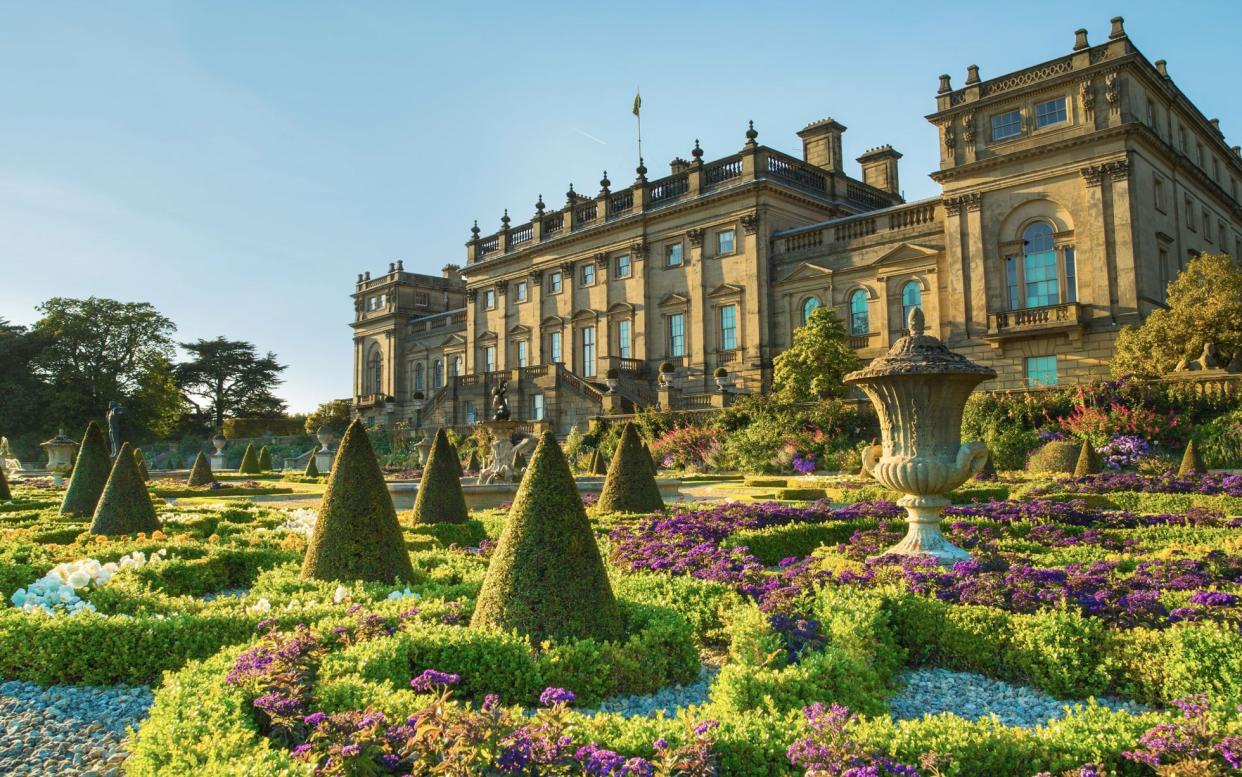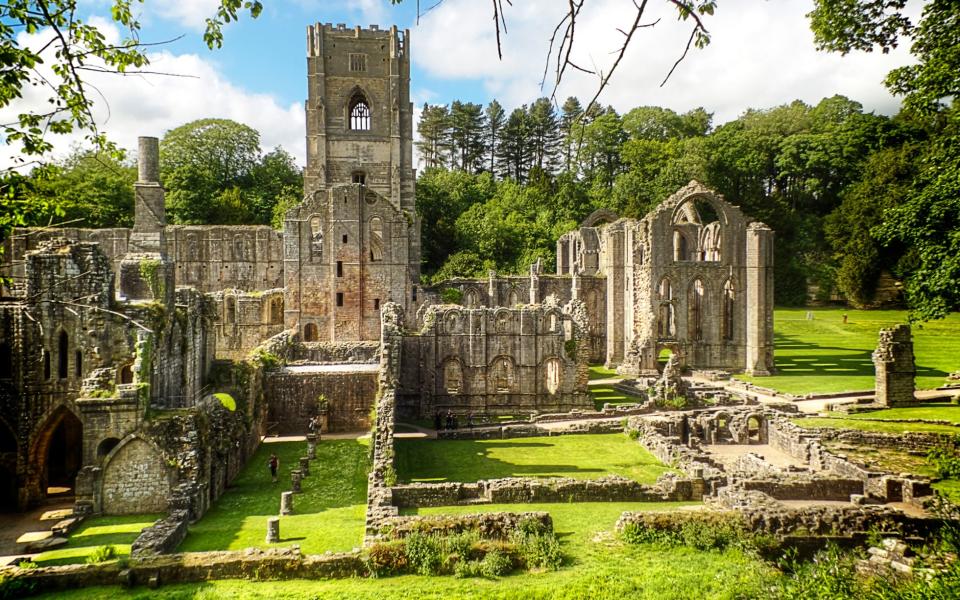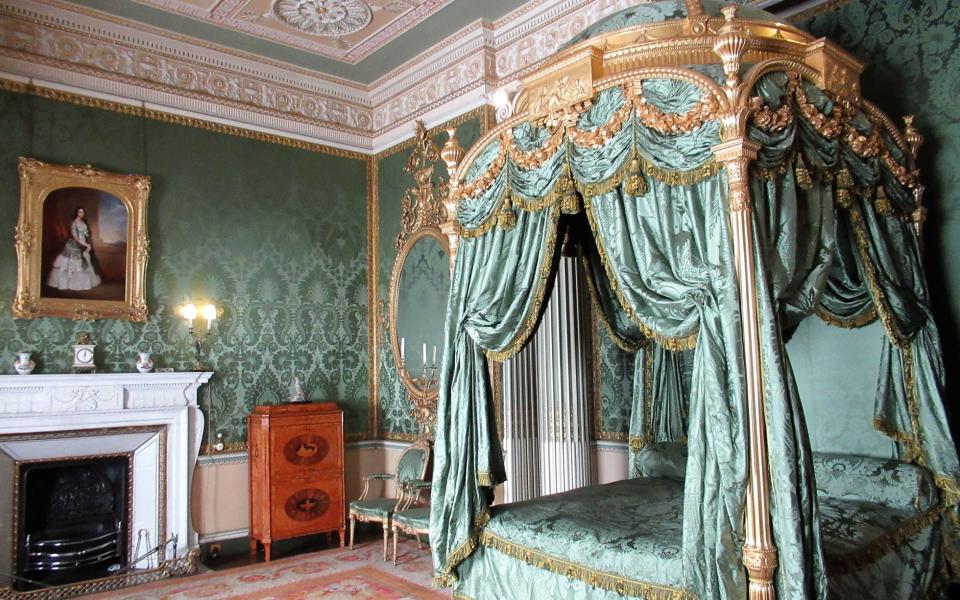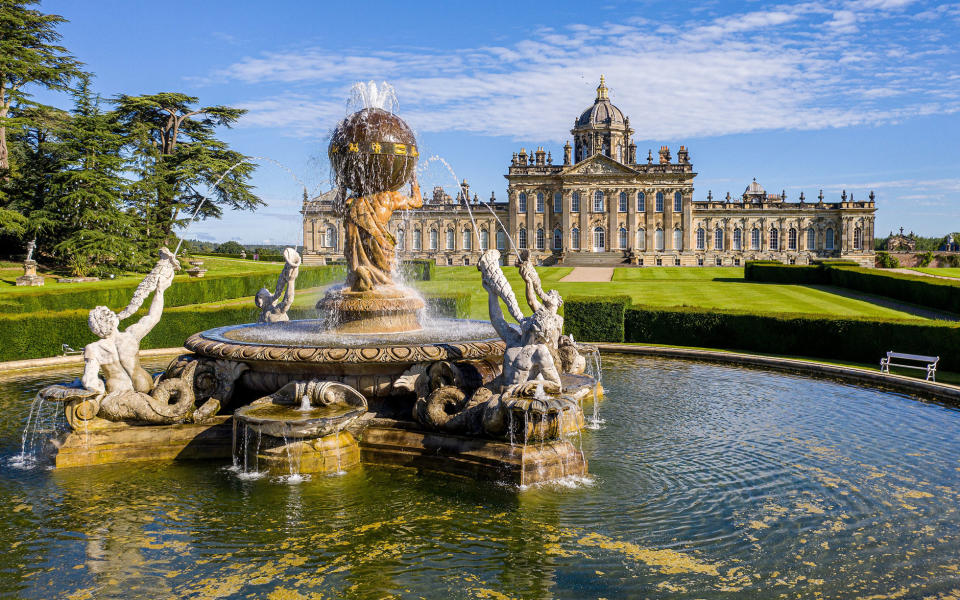Barbara Taylor Bradford: The English stately homes that inspired my novels

It was my mother who introduced me to stately homes when I was still a child. She came from Ripon and had grown up in the shadows of Fountains Hall and Fountains Abbey nearby. She went back to her beloved Ripon frequently and she always took me with her.
I remember those trips fondly and was always happy whenever we visited the deer park at Fountains Hall. There were so many of the animals roaming freely, and I was fascinated by the lovely sight of the little Bambis huddled with their mothers in the herd. That, and two other things intrigued me at Fountains Hall. Namely, the ruins of the great Cistercian Abbey, and the water gardens which had been planned and landscaped in an earlier century.
I’ve since come to understand that it was when wandering through the ruins of the great Cistercian Abbey with my mother that my imagination began to take shape. I was curious about the monks who had lived there so long ago. What kind of lives did they lead? What did they think and do?
As for the water gardens, I thought they were beautiful but I was also taken by their unusual names. For instance, there was the Moon Pond with a stone statue of Neptune at its centre. There was also a series of Crescent Ponds, yet another unique name. A statue of Bacchus guarded another one. Then there was the lovely Temple of Piety, built in front of a stand of leafy trees, and this faced Neptune in the water.
Looking back, I think my love of stately homes began at that particular time. I truly believe the sights I saw there helped to set my mind working. No wonder I have written so many novels featuring such grand houses, and their fictional occupants behind those ancient walls.

I was about 10 years old when my mother led me further afield to see other great houses: Temple Newsam, just outside Leeds, which has 365 windows, one for each day of the year; the elegant Newby Hall near Ripon; and Castle Howard, where Brideshead Revisited was filmed.
I was also taken to Harewood House for the first time around then, a stately home of enormous grandeur and beauty standing in a glorious park, located just outside Harrogate.
This house made a deep impression on me as a child, so much so that when I had to create a home for the Ingham family in a recent book collection, the “Cavendon” series, Harewood was my inspiration.
I was captivated by the 77ft-long gallery, and its beauty still takes my breath away today. So do the magnificent rooms designed by Robert Adam, who in my opinion is the greatest interior designer of all time. In fact, he is the father of interior design as we know it today. He stands alone in his magnificent talents, a true genius. Even now, his traditional style is as popular as it ever was. His rooms have a timeless beauty, luxury, and a most striking opulence.

While Adam put his singular stamp on the interiors of Harewood House, John Carr, of York, was the architect. The great Thomas Chippendale, of Otley, who had recently made a name for himself in London, made the furniture while the gardens were landscaped by [Lancelot] “Capability” Brown. This extraordinary team of genuinely talented men came together to create a house with such flair, imagination and skill for Edwin Lascelles, the owner of Harewood. It is little surprise that the house was a dazzling stately home and much admired when it was finished.
Aside from the long gallery, I was always impressed by Carr’s grand entrance hall. This is perhaps because of Adam’s decoration: cream plaques set against soft misty green walls, soaring mahogany columns and bold plaster work by Joseph Rose all combine to make the hall a magnificent sight.
Adam paid great attention to detail, and that is apparent in the long gallery where Chippendale’s furniture is on display, some of the finest ever made. Along with the pelmets, the picture frames and the pier glasses, the brilliant Scottish craftsman was also responsible for the marquetry and gilding. Harewood House is indeed a feast for the eyes, as is Syon House in Middlesex.
It was a friend who led me to Syon when I was a young journalist in Fleet Street, a reporter on the London Evening News. Her name was Dorothy Davies, an interior designer and mother of the famous child star, John Howard Davies, who enchanted everyone in the original Oliver Twist film.

Dorothy took me to Syon House, “for a big surprise” was the way she put it. Little did I know when I saw the crenellated roof line atop a solid square building, with a stone lion guarding the roof, that I was about to enter a true treasure trove.
I remember Dorothy saying, “That’s the Percy lion, and Syon House is the home of the Duke of Northumberland. Wait until you see what’s inside…” Although I pestered her to tell me more, she wouldn’t. When we walked into the Great Hall, I understood why: it only took me a moment to recognise it was by Robert Adam. I was awestruck.
There it was, a huge white hall, with an extraordinary plasterwork ceiling, a black-and-white marble floor laid out in an intricate design, and life-size Roman figures in togas standing on square pedestals covered in plasterwork. A unique atrium. When I looked at Dorothy, she just smiled, knowing that she had both surprised and delighted me.
As we moved through the gorgeous rooms of that house, Dorothy explained that it ranked as one of the most illustrious in England because of the superb interiors created by Adam in the 1760s. His patrons were the Earl and Countess of Northumberland (before becoming the Duke and Duchess). They undoubtedly knew what they were doing because Adam had worked for them at Alnwick Castle in Northumberland.
Naturally, I fell in love with the red drawing room with its magnificent painted ceiling, crimson Spitalfields silk walls, and a carpet designed by Adam in 1769. I thought of my mother that day, and what she had said to me as a child: “Keep your eyes open always, so that you see all the beauty.” A year later, when she came to stay with me in London, I took her to Syon House and reminded her of her words.

The designer and architect was known to have many fans in Georgian England, as everyone was after him to design their great houses. It was perhaps his attention to detail that was a key part of his success. His eye for colour, form and textures surely played an important role.
After a classical education in Italy, he understood paintings, tapestries, the use of marble, statues, and other objects of art. As such, he designed literally every part of a room: the ceiling, the walls, the floor, the window draperies, the artefacts. He designed the carpets and had them made at Moorfields; all of his designs for silks came from Spitalfields; he designed every inch of plasterwork, later executed by Angelica Kauffman and Rose. He was a true master of his crafts.
Many of the original owners of Britain’s stately homes provided amazing opportunities for the best craftsmen in the country to showcase their work, ranging from landscape architects such as Capability Brown to artists Joshua Reynolds and Peter Lely. The riches our stately homes contain promise plenty of delight as they begin to reopen to visitors once again.
How to see Barbara's favourite stately homes
Because of coronavirus restrictions, many of the houses listed have only their gardens open. All require visitors to book in advance.
Fountains Hall
The abbey, garden, visitor centre shop and restaurant have reopened. Admission £13 adult, £6.50 child; nationaltrust.org.uk
Harewood House
The house, grounds, gardens and bird garden are now open. Admission £13.95 adult, £7.65 child; harewood.org
Syon House
The Gardens and Great Conservatory are open Wednesdays to Sundays 10.30am to 4.30pm. Syon House is currently closed. Admission £8 adult, £6.50 child; syonpark.co.uk
Newby Hall
The gardens, playground, railway, restaurant, river cruises and all exhibitions are now open for the 2020 season. The hall remains closed. Admission £14.50 adult, £10 child; newbyhall.com
Alnwick Castle
The castle grounds and museum have now reopened. Hours are 10.30am to 4.30pm; the last entry slot is 2.30pm. Admission £6 adult, 16s and under free; alnwickcastle.com
Barbara Taylor Bradford’s latest book 'In The Lion’s Den' is out on Aug 20 (HarperCollins; £7.99).

